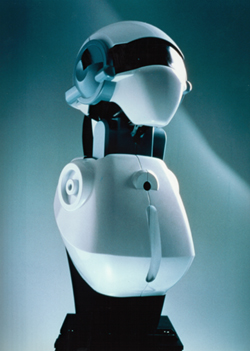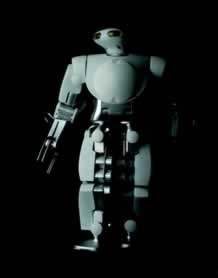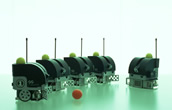 |
||||
|
|

 |
||||
|
|

| Symbiotic Intelligence group focuses on high-level cognitive functions, and takes more synthetic approach to understand basic principles of intelligence reformulated in the engineering context. Consider how human learned to fly. Leonard da-Vinci, for example, tries to mimic wings and flipping motion of birds, and failed. The Wright Brothers discovered that the essence of flight is "lift" and "thrust", and created a fixed wing to generate lift when thrust is applied using an engine. The recent success of the IBM's Deep Blue that beat human chess champion is decomposition of human intelligent ability during the chess game into memory and search. While the demonstrated success is limited to the chess, it may well be applicable for other highly intelligence tasks which shares essential aspects with chess. Symbiotic Intelligence group strive to find the underlying principles of intelligence using high degree of freedom robot systems with multiple perception channels, such as vision, auditory, tactile, etc. We consider the integration of multi-modal perceptive inputs combined with motor control to effects the environment and self status is the basic conditions that exhibits intelligence. The concept of streams of multiple perception channels and their association is the other important premises. We have not clearly decomposed that are essence in the engineering reformulation, as identification of such concept is the final goal of the project. |
||||||||||
|
|
|
 |
|
|
|
 photo by Yukio Shimizu |
While traditional robotics pursue functions and capabilities of robots, as technology matures, "design" emerges as a critical factor in robots. This is particularly true for robots for consumers, such as entertainment robots, home assistant robots, and other robots that are expected to be seem by general people, instead of factory robots that are confined inside factories. In order to facilitate the progress in the field for the era of "robots@home", we propose Robot Design as a new field in the industrial design.
|
 |
![]()
Copyright (C) 1999-2003 Kitano Symbiotic Systems Project All Rights Reserved.